It’s funny how things work. This article was planned to be the very first one ran on RevolverGuy.com. Several things happened (mostly at my own doing) that changed this course. My friend Aaron (at the ITRH Urban Survival Podcast) wanted to to run my revolver interview much earlier than I had anticipated. Wanting to space out reviews of revolvers (because I don’t have many), I pushed this one to the back burner. Then I got in touch with Mike Wood to write a review of his book. I got some new ideas and the next thing I knew, RevolverGuy.com was charting its own course. But a year later I’m finally getting around to writing the article I started in October of 2016. This is an article about MY first revolver, the Smith & Wesson Model 60-15.
I will freely admit that generally speaking, I am no fan of the Smith & Wesson J-Frame. Obviously my 640 Pro Series is an exception to this rule, but I usually try to steer others away from small wheelguns. First, I am not fan of the fixed “sights” on most small revolvers (or complete lack thereof on others). The little trench and tiny, un-distinguished front post are abysmal in my estimation, and suited for neither precision nor speed. Strike one. The short “snub-nose” barrels of these guns don’t help practical accuracy any, either.
Finally, the general movement to scandium, aluminum, and other alloys to produce guns that are barely heavier than a book of stamps make J-Frames difficult to shoot, and really difficult to shoot well. They recoil heavily and this can turn new shooters off quickly. They might be fun for a cylinder or two, but you’re not going to be doing many heavy range sessions with them. Extreme light weight also makes these guns more difficult to steady at arm’s length, especially when coupled with a 12(+)-pound trigger. It was with these shortcomings in mind that I purchased my very first J-Frame – indeed, my first revolver – in the early 2000s.
The Smith and Wesson Model 60-15
The Smith & Wesson 60 is the first regular production, stainless steel revolver. In the world. It was designed as a stainless version of the famous Chief’s Special, and quite a few variations of this design have emerged through the years including Performance Center and Ladysmith models. It used to be available in .38 Special but all the Model 60s in the S&W catalog of today (4 of them!) are Magnums. Currently the standard Model 60 is available in my preferred configuration: chambered in .357 Magnum with a 3” barrel, and wearing an adjustable rear sight mated to a pinned-on front sight.
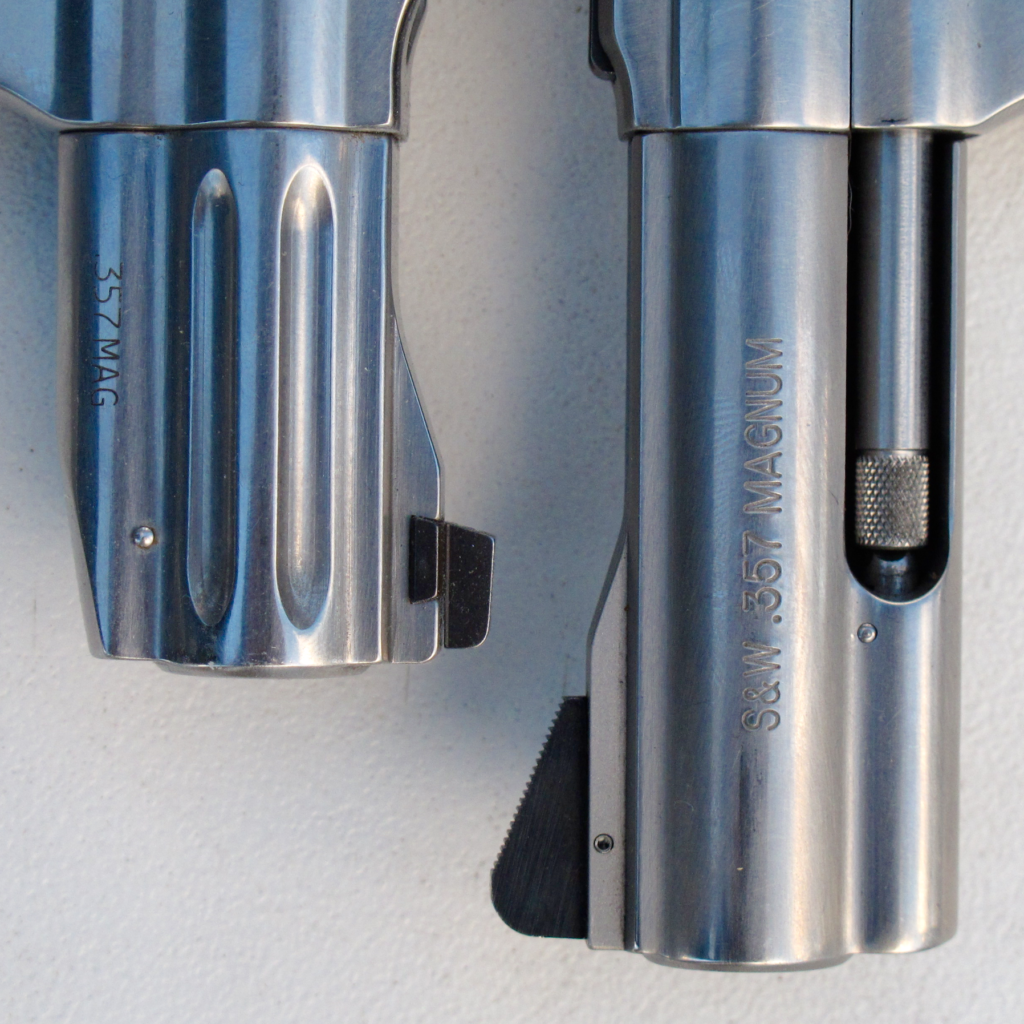
I recently became reacquainted with this old friend. Unlike some gun guys, I’m not much given to sentimentality. I’m a utilitarian, and if I’m not using a gun, I’m pretty likely to let it go, and that original Model 60 I bought back in ’04 was one that got let go. Fortunately for me, it didn’t go too far. I put this revolver on “permanent loan” with my father, which pretty much makes it his first revolver, too! I talked to Dad and he agreed to let me “check it out” for a while. I took it back for this review, and I have a few more plans for it before I turn it back in – I’ll talk about that at the end of this article. For now, let’s talk a little bit more about the Model 60.
With it’s curious-looking (for such a diminutive revolver) 3″ tube, the 60-15 sits somewhere between “snub nose” and “normal revolver” in my mind. It’s just ever so slightly out of proportion in a way that I can’t quite put into words. But, I am sincerely hoping there are some benefits to its slightly awkward appearance. The added sight radius coupled with the adjustable sights have the potential to make this gun more practically accurate than the more standard 2″-ish small frame revolvers. One assumes the extra inch of tube doesn’t hurt ballistic performance none, either.
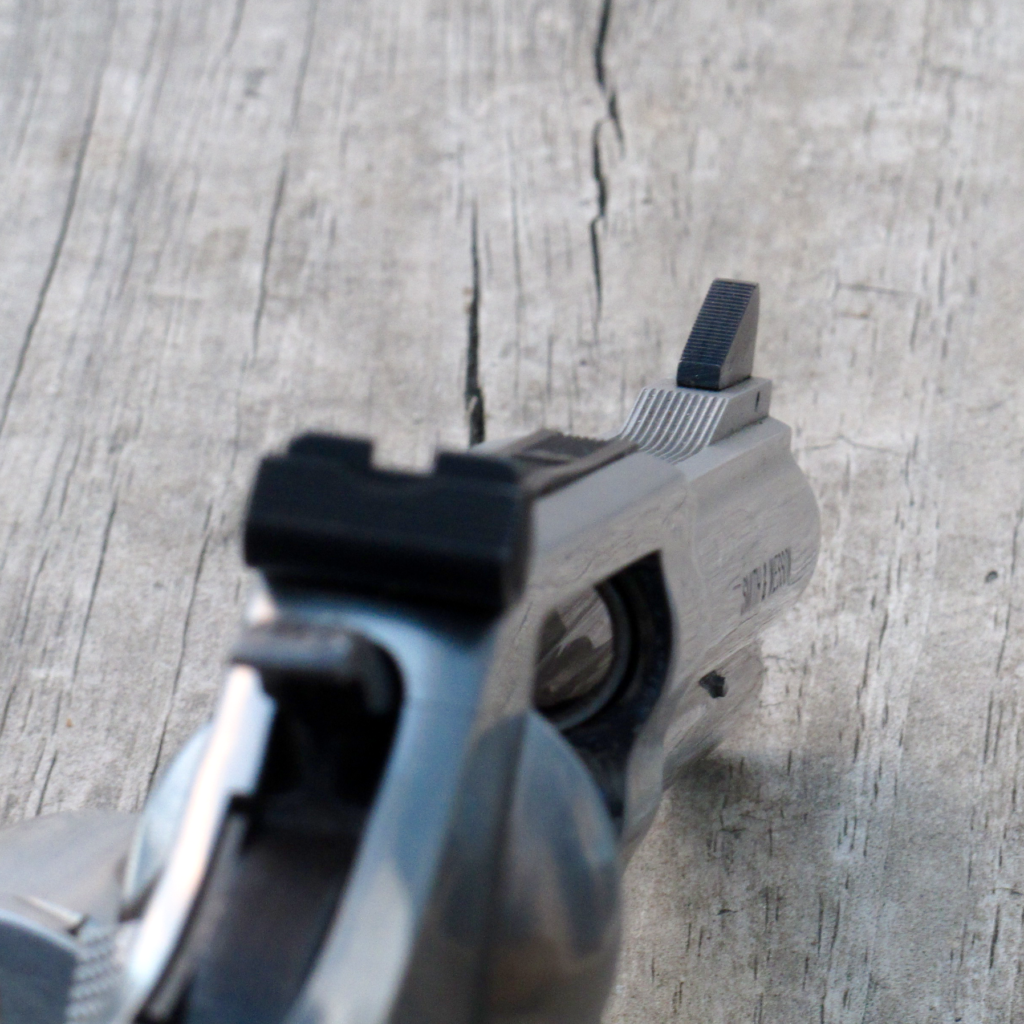
The adjustable sights that come stock on the 3″ model are inestimably better than standard J-Frame sights, but still not perfect (and not quite as good as the Novaks on my 640). The rear notch is not as deep as you may be accustomed to if you regularly shoot older, larger-framed guns, nor does it have a white outline. Sadly Smith & Wesson has seen fit to replace the old blade with an”improved” shallower rear. I could live without the outline but man I wish the notch were just a bit deeper – something more along the lines of the 686 sight shown below. The difference between those two notches might not look that big, but it is!
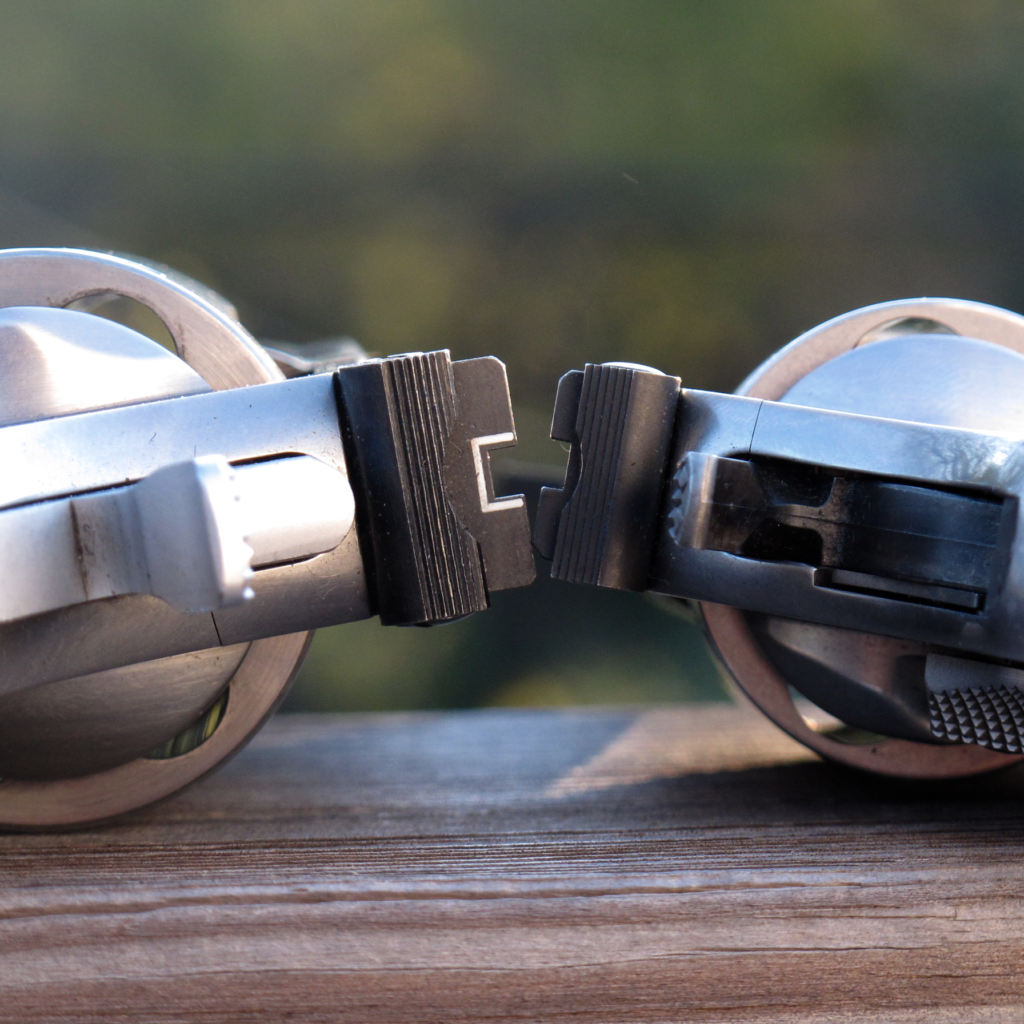
Shooting & Carrying the Model 60
The all-stainless construction of this gun is a boon to pleasant shooting. The Model 60 is a pure joy to shoot with loads of the .38 Special variety.; recoil is reduced to “fun-gun” category. Even mid-range .357 Magnum loads are, if not exactly enjoyable, tolerable. This translates to better recoil management and faster follow-ups. On the other hand, at slightly over 23 ounces (empty), this gun is over twice as heavy as some of the “light-as-air” models. I don’t have an issue with this, being used to my 640 Pro, which comes in at right around the same weight. Others might, though, if the revolver is intended for deep concealment or pocket carry.
So far I haven’t carried the Model 60-15 (at least not in the last decade), but I will. In the meantime, I have shot it quite a lot, and here is what I can report: the trigger, predictably, does a handy job of hiding any potential benefits of the longer barrel and better sights. I recently made time to put a couple hundred rounds through the Model 60-15, and I couldn’t do any better with it than my 640 Pro. In fact, I mostly did worse. I think the potential for better accuracy is there, but I have to get beyond that trigger to find it.
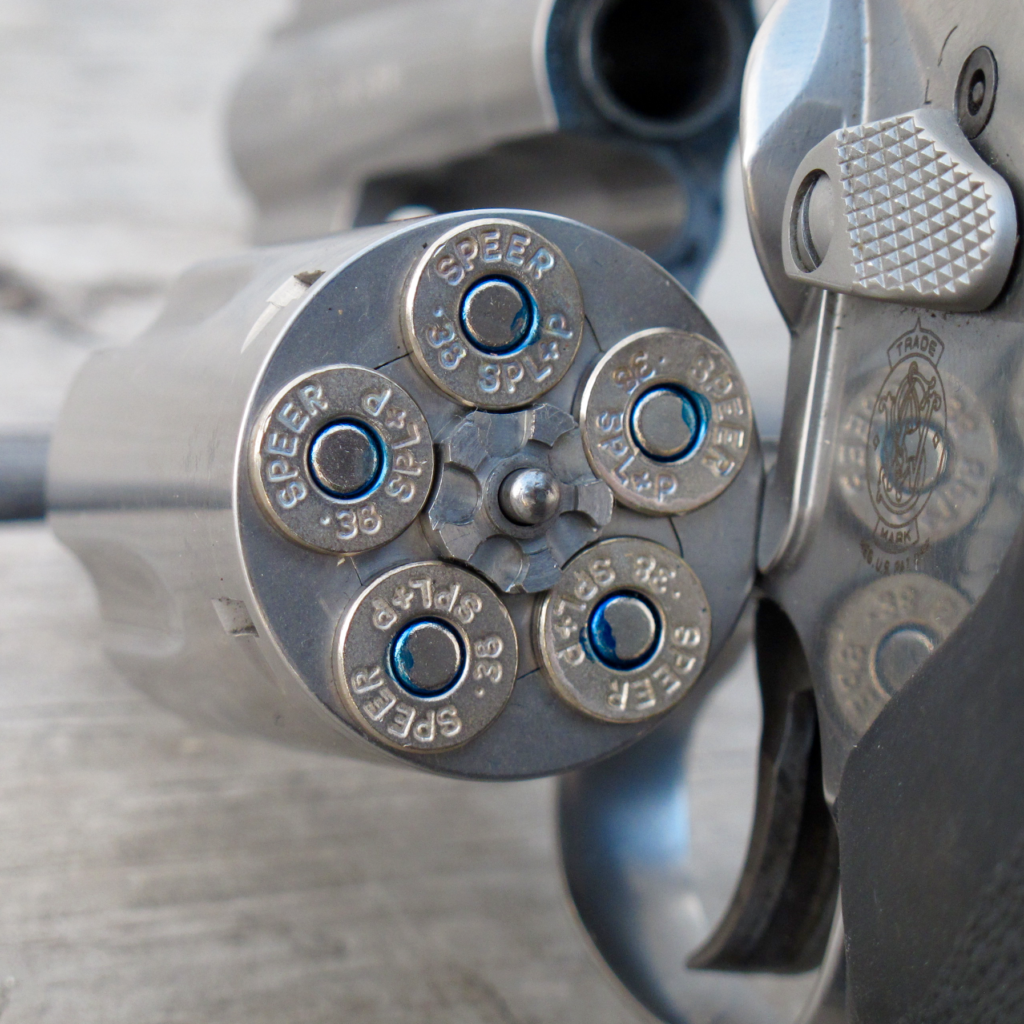
For some reason, when shooting this gun, I expected recoil to be more akin to that produced by my 686 than other J-Frames. Of course this was folly on my part; the longer barrel doing very little to actually reduce the effects of recoil. Expecting it to do so might have colored my initial experience somewhat, so I want to work with this gun a bit more. Again, I feel like there is a lot of potential here, but I’m going to have to work to get at it.
There is one other advantage to this revolver that may not be immediately apparent. The 3″ barrel affords plenty of room for a full-length ejector rod. I have mostly decided that this is necessary equipment on a working defensive revolver, and that was a deciding factor in my choice of the 640 Pro. This isn’t a cool, sexy feature, but getting brass out of the way of incoming cartridges is pretty important.
The Way Ahead for Dad’s Model 60-15
In my estimation, the Smith & Wesson Model 60-15 has a ton of potential, but to utilize all of that potential is going to require some tinkering. Those sights certainly aren’t all they can be. This gun needs some better grips to be carry-worthy. The trigger flat-out sucks. I don’t like an exposed hammer, and would greatly prefer a bobbed one for concealed carry work. And since I mentioned carry, that means I’ll be back out on the market looking for an even more esoteric revolver holster. And that internal lock…well, it’s an internal lock. Suffice to say, I have my work cut out for me.
But like an old house, the “bones” are there. This is an amply strong stainless steel revolver, with a good barrel, sights that I can mess with, and a long ejector rod. So, into 2018 I will be working to fix up the Model 60-15 so I can return it to Dad better than how he gave it out to me. I’ll bring you guys along for the ride and let you know what worked, and what didn’t. Stay with me!

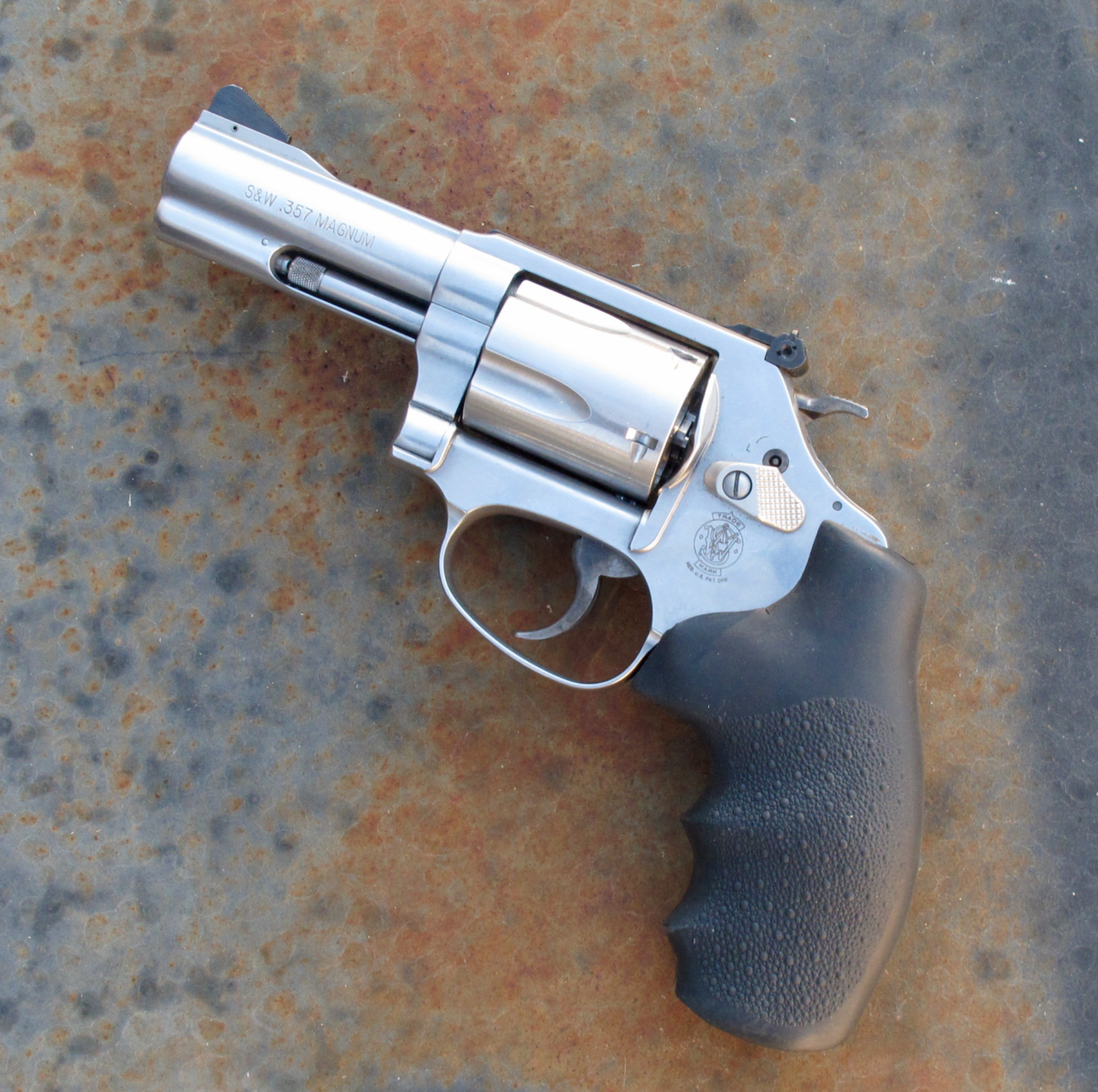
Will your dad conceal-carry the gun? If it is for home defense, that may mandate different options from a carry gun.
Also I am surprised that the trigger is not smooth, because my experience with S&W has always been pleasant.
I had, and shot quite a lot, one of the 60-15s. I traded my brother a mod 60 for his 60-15 and we were both happy. I did enjoy shooting the gun and it was one of my favorites for a couple years, along with a 642 which I have shot the snot out of. Then I handled a Ruger lcrx 3″ and the love affair was over. I traded the 60-15 even up for a new Ruger and have never looked back.
I know I gave up .357 mag stuff, but I never was much for them in that small of a gun. I now, and did prior, load +p .38s as my carry load, mostly hornady defence 110 gr..
I feel the lighter weight and better grips on the ruger make a much better kit gun the 60-15. The sight on the ruger may be a bit better for me to see.
How fickle the shooter can be!!!!
I do really enjoy your site and look eagerly for more.
Russ,
Have you considered switching to the standard pressure version of the Hornady Critical Defense? If you look at the Lucky Gunner Labs test results (https://www.luckygunner.com/labs/revolver-ballistics-test/#38spl), the standard pressure load actually does a little better than the +P load, and it reduces recoil slightly (only by about .7 ft/lbs and 1 fps, but still…). I have a .38 that is rated for only limited +P usage, so I use the standard pressure Critical Defense load. It loads into the cylinder more easily than wad cutters with about the same recoil, and I can actually get a hold of it (unlike the Federal 125gr Nyclad that I originally wanted to use).
Greyson
No I have not, mostly because of a good supply of +P stuff.
The Lucky Gunner Lab work is great, the first time I have seen all of the loads tested and shown next to each other.
Russ
Personally, I really like a 3″ gun. The extra barrel length helps the gun stay put when carried in the appendix position, I like the slightly forward balance, and I feel it is more versatile. I am personally not all that bothered by heavy trigger pulls (my SP101 still has the factory springs), but, since you are used to a lighter trigger, I think you definitely need to give this gun a try with the Apex kit in to make it a fair comparison.
I look forward to watching this project progress. I think it has the potential to be a very enlightening project.
Or at very least this gun will be a platform for some neat modifications and accessories! I’m very interested in the SP101 – that will definitely be the next gun I ask for from Ruger!
Justin: a partially off-topic comment. In this article you mention a three inch barrel as being required for full length extraction, as you have several times before. And indeed I’ve read similar comments by writers many times over the years. This past fall I purchased a 2 1/4 inch Ruger SP101, and reading your article today it occurred to me that it might be interesting to actually measure the differences. I have a number of GP100’s and I used several of them for comparison. Visually, the snubby extractor rod is obviously shorter. But when the GP100 rods are fully depressed, they stop .4 of an inch short of the crane surface. The SP101 rod stops .125″ short of the crane, it goes farther in. On the other end, with the rod fully depressed, the gap between the cylinder and the extractor star is .9″ for the SP101 and only .8″for the full size GP100s. So the shorter rod actually produces more extraction movement. All my guns are Rugers and I do not know if these results apply to Smith & Wesson models and other brands. If you have the right models you can measure and see for yourself. Appearances can be deceiving, and don’t believe everything you read. Grin.
Lee,
I have looked into this at least on the S&W side. The three-inch barrel is not a requirement for a full-length ejector rod, and if I stated that it was, that was in error. My 2.125″ 640 Pro has a “full-length” ejector rod, even though it is much shorter than the rod on my 686 (it should probably be called a “full throw”). The 686 doesn’t depress fully, so the two guns end up offering the same throw (within a few 100ths of an inch). I got curious about this a while back and took out a set of calipers and took the measurements.
Most snubby S&Ws fall well short of this. I don’t have one handy, but take a look at the 642 on S&W’s website. I would say from experience (so take that for what it’s worth) that the “short throw” ejector rods leave somewhere between 1/4 to 1/3 of the brass still in the chamber if it doesn’t fall free.
Rugers…I have no idea. I don’t own any so I can’t check, but to your point I’m a stickler for the details and rarely rely on on instinct or looks alone.
Justin
I’ve only played with S&W’s in the store, but there is a definite difference between the ejector rod on a 642 and a SP101 (any barrel length; they all use the same ejector rod). My understanding is that part of the difference is in the mechanism needed to lock the end of a Smith’s ejector rod into place. Since the SP101 locks differently, it can get more reach out of the same length rod and also have a longer rod in the same barrel length. Unfortunately, Ruger went with a S&W-style ejector rod on the LCR, so you don’t get as much extraction with those as you do with an SP101. That is probably my biggest complaint with the LCR.
Some S&W’s (like the new model 66) use a different front lock-up, so the ejector rod can be done more like the Ruger and get more reach. I’m not sure how they do it with guns like the 640 Pro (maybe the extra 1/4 inch makes enough difference).
The up side with Smith & Wesson is that they seem way more likely to include small differences between model versions. As a result, you might actually get a different length ejector rod on different barrel lengths of a Model 60. The LCR is going to have the same short ejector rod regardless of barrel length.
BTW, using .357 Magnum brass, my LCR leaves slightly over half the case (about 11/16″) in the cylinder. My SP101 leaves about 1/5 of the case (about 1/4″) in the cylinder.
Greyson: I get the same measurement with my SP101 as you do, 1/4″ of the case still in the cylinder at full extractor stroke. I just measured three of my GP100s for comparison and they all leave a strong 1/3″ in the cylinder. Better extraction from a snubby? Pretty sure I’ve never seen that any where. Grin.
Lee,
If something is on your mind, feel free to just state it plainly.
Justin
Justin:
I’m not sure what to make of your reply. Have I offended you? My comments on extraction were strictly generic. I was honestly surprised on measuring today find that my snubby pushes cases farther out of the cylinder than the full size model. In thirty years of reading gun writing, I’ve never seen any reference to that fact. I thought it was an interesting item to comment on, I had no intent to start a feud.
Lee
Lee,
I think I misunderstood you, and I hope you won’t take it personally.
Justin
Justin, I recommend looking at Altamont grips, they have some excellent choices for the J frame. Lastly, I have a IWB holster from Bell Charter Oaks for a 3” J frame not being used. You can borrow for as long as you like. Regards. Curtis
Lee, it’s an interesting point, and I think it’s great fodder for an article. The S&W and Ruger designs are different enough that they each seem to have their own rules of the road when it comes to ejector throw. I’m surprised by the SP vs. GP results as well. We’ll start taking some measurements and get to work on something. Thanks!
Great article. This revolver is a an interesting package that seems to be a candidate for an inconspicuous trail gun–although the Ruger SP101 or LCR with adjustable sights would give it a run for the money.
While I certainly don’t mind having the extra ejector rod length, I think the practical value of it is overrated. Holding the muzzle up and smartly smacking the ejector is the key to getting brass out, and keeping things vertical helps avoid getting unburnt grains of powder under the extractor star, which ties everything up. I have some top-break revolvers (a Webley Mark VI and an H&R Hammerless .32) that eject when you open the action; the ejector stroke on neither of these is as long as the empty cases. Same goes for my single-barrel 20-gauge shotgun that ejects the shell forcefully even though the ejector comes out only about 1/3″. Obviously the longer ejector rod gives an extra margin of certainty, but I don’t know that it’s all that crucial.
Keep up the good work.
Steve H
Steve H,
I also wonder how necessary the full length extractor is. It is my number one concern with the LCR series. Ruger did not feel it worth spending the money on a longer rod to go with the longer barrel version. I think that was a mistake, but what can one do?
A 3″ Model 60 is about as close to being a great all-around gun as one can get. A set of CT grips make it an excellent self-defense tool. The front sight is held on with a roll-pin, so a local gunsmith could easily change it out for a tritium sight if that’s your preference.
A 3″ Model 66, of course, offers an additional round, but those guns are pricey.
If one is willing to forego .357, 4″ Model 64s are still out there in the ~$300 range.
I struggle with my 60-15! I WANT to love it, but it doesn’t love me back (at the range)!
Though it isn’t marked as a Pro Series, it has the 3″ barrel, Trijicon front sight (which Trijicon replaced when it lost luminosity within warrant period), and the scallopped see through lug, flat sides of the barrel, all that fluff.
I shoot it at 15 yards with standard .38 special and +P’s. I am not happy with its innaccuracy, to say the least! It will print on a TQ-15’s center square, but never consistently.
I have 2xl mitts, so I took the gorgeous S&W wood grips off and put on trusty Pachmayr grips for a SLIGHT improvement.
I am thinking it is time to get the DA trigger smoothed out (I only shoot DA with this piece) and see if that helps.
I just don’t have confidence in the accuracy I don’t jave with this gun, so I find myself toting a 4″ Model 64 that is more accurate than I am but, HEAVY. It also “prints” when I carry in summer.
I want to carry the 60-15, but whenever I do, confidence goes out the window.
Dan, I hear you. The Siren Song of the J-Frame is loud and hard to resist, but these will always be “compromise guns” for most of us. You just have to figure how much capability you’re willing to give up that day by carrying it. It sounds to me like your time is better spent finding an improved holster to better conceal your 64.
I received a mod. 60 3″ , 5 shot .357mag as a gift back in’95 or it could’ve been ’96 2017 . I ABSOLUTELY LOVE-IT ! It’s just a perfectly made weapon . I’ve fired just about everything(CARTRIDGES) in .38 special ;.357mag , and even some 125gr Buffalo-Bore that’s rated at 1700fps . This has to be S&W’s most practical design ……….ever!
Most practical design? I think we have a heretic in our midst! Certainly you can’t overlook my beloved Combat Magnum! ; ^ )
Glad you’re enjoying the gun and RevolverGuy!
I agree. I have owned dozens of Smith revolvers, from J to N frames, and this little three inch 60 is the most convenient and accurate for its size I have owned. It is an ideal woods gun and with shot loads, makes a perfect snake gun for the Missouri Ozark streams I like to fish and it is adequate for two legged varmints as well with HP loads.
FYI, if you otherwise like the gun, you can easily put a taller front sight with a tritium insert in, and easily replace the rear blade with a taller blade. This will cost maybe $125 for the front sight and like $15 for the blade. Tons of places will do this for you. I don’t want to post any names so it seems like I’m endorsing any specific place. But google tritium front sight smith Wesson j frame and you’ll be able to get it sorted.